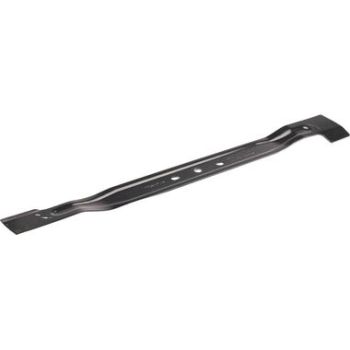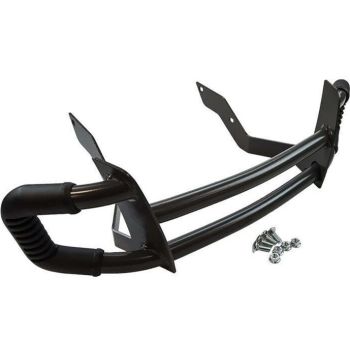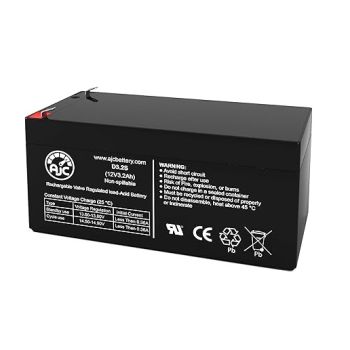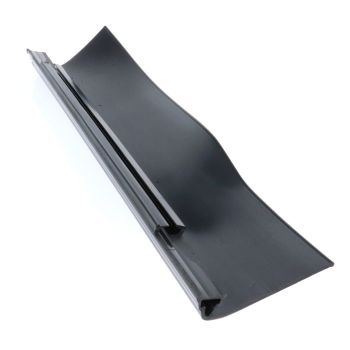Maintaining a beautiful, healthy lawn has traditionally required hours of hard work and constant attention. But with advances in technology, lawn care is undergoing a revolution. The future is here with smart, robotic tools that take the hassle out of yard maintenance, allowing you to enjoy a perfectly manicured lawn without lifting a finger. From autonomous robotic mowers to intelligent irrigation systems and automated weed controllers, these innovative devices use AI, sensors, and connectivity to work efficiently and precisely. Whether you’re a busy homeowner or simply want to spend more time relaxing, embracing smart lawn care technology means less effort, more convenience, and eco-friendly solutions. Explore how these tools are transforming the way we care for our lawns today and in the future.
The Evolution of Lawn Care Technology
Lawn care has come a long way from the manual push mowers and noisy gas-powered trimmers of the past. The rise of robotic lawn mowers and other smart devices marks a significant leap in home maintenance technology.
Early Innovations
The first wave of robotic mowers appeared in the late 1990s, but early models were limited by high costs, basic functionality, and reliability issues. As sensor technology, GPS, and battery efficiency improved, these tools became smarter and more affordable.
Today’s Smart Lawn Care Tools
Modern robotic lawn mowers use sophisticated algorithms, GPS mapping, and sensor systems to navigate complex yard layouts, detect obstacles, and mow precisely within boundaries. Homeowners can remotely arrange mowing times with several models that can be set and operated using smartphone apps.
Robotic Lawn Mowers
The foundation of smart lawn care is robotic lawn mowers. Brands like Husqvarna Automower, Worx Landroid, and Robomow offer advanced models equipped with GPS navigation, obstacle detection, and anti-theft features.
How They Work: Boundaries can be established via GPS mapping or a perimeter wire. The mower then autonomously trims grass to a consistent height, often mulching the clippings to fertilize the soil naturally. Most models recharge themselves when the battery runs low.
Benefits:
Cuts the lawn regularly for a manicured look
Reduces noise and emissions compared to gas mowers
Operates in the background, silently, day or night.
Smart Irrigation Systems
Although overwatering can result in waste and damage, watering is an essential part of lawn care. Weather information and soil moisture sensors are used by smart irrigation controllers like as Rachio, RainMachine, and Netro to customize watering schedules.
How They Work: Connected to your Wi-Fi, these controllers adjust watering times and amounts based on real-time weather forecasts and moisture levels, ensuring your lawn receives exactly what it needs.
Benefits:
Reduces water use and utility costs.
Keeps roots healthy and avoids overwatering.
Can be controlled remotely via mobile apps
Automated Weed Control Devices
Weeds are a constant challenge for lawn enthusiasts to detect and eliminate without damaging the nearby grass. Emerging robotic weeders employ artificial intelligence and computer vision.
How They Work: These devices patrol your yard, detect unwanted plants, and either mechanically remove or apply targeted herbicides only to weeds, reducing chemical use.
Benefits:
Maintains a pristine lawn appearance
Reduces chemical exposure
Saves time compared to manual weeding
Lawn Monitoring Sensors
Lawn health depends on many factors, including soil pH, temperature, and nutrient levels. Smart sensors like Parrot Flower Power and Edyn Garden Sensor provide real-time data to help you optimize care.
How They Work: Placed discreetly in the soil, these sensors collect environmental data and transmit it to your smartphone, guiding your fertilizing, watering, and mowing decisions.
Benefits:
Helps prevent lawn diseases and stress
Enables precise, data-driven lawn care
Reduces guesswork and unnecessary treatments
Beyond mowers, smart irrigation systems, robotic weeders, and even drones for lawn monitoring are starting to enter the market, promising a fully automated lawn care ecosystem.
How Do Smart Robotic Lawn Tools Work?
Smart robotic lawn care tools combine advanced technology and intelligent design to keep your lawn perfectly maintained with minimal effort from you. At their core, these devices operate using a blend of sensors, software, and connectivity features that allow them to navigate and mow your yard autonomously.
Sensors and Mapping: Most robotic mowers rely on multiple sensors, including ultrasonic, infrared, and bump sensors, to detect obstacles such as trees, garden furniture, or pets. While more sophisticated models employ GPS and mapping technologies to function wirelessly and create accurate lawn maps for effective mowing pathways, some models require physical boundary wires to designate the mowing area.
Artificial Intelligence (AI): Many smart robotic mowers incorporate AI algorithms that help them learn the layout of your yard. This enables the mower to optimize its cutting patterns, avoid repeatedly covering the same areas, and adapt to changes like new landscaping or garden beds.
Connectivity and Control: You can remotely schedule mowing times, change settings, and track progress with these devices, which frequently link to your smartphone or home Wi-Fi network. Notifications can alert you when the mower finishes, requires maintenance, or encounters issues.
Eco-Friendly Operation: Powered by rechargeable lithium-ion batteries, robotic mowers run quietly and emit no direct emissions, making them an environmentally friendly alternative to traditional gas-powered mowers.
When combined, these technologies allow robotic lawn mowers to provide effective, hassle-free lawn care, allowing you to take pleasure in a lovely yard without doing any work.
Key Features of Smart Robotic Lawn Tools
When investing in smart robotic lawn care tools, understanding their key features can help you choose the right device for your yard. These features are designed to maximize convenience, efficiency, and lawn health:
Programmable Scheduling: Set specific mowing times based on your lifestyle and grass growth cycles, ensuring your lawn stays maintained without manual effort.
Weather Sensors: Detect rain or wet conditions and automatically pause mowing to prevent damage to your grass and soil.
Obstacle Avoidance: Use sensors to identify and navigate around trees, pets, garden furniture, and other obstacles to avoid collisions and ensure safe operation.
Self-Charging: Automatically returns to the charging dock when battery levels are low, so the mower is always ready for the next session without your intervention.
Multi-Zone Capability: Manage multiple lawn areas or complex yard layouts by operating in different zones with tailored schedules and settings.
Quiet Operation: Make as little noise as possible so that you can mow in the early morning or late at night without upsetting your neighbors or family.
These features combine to make smart robotic lawn tools an efficient, user-friendly, and eco-conscious solution for modern lawn care.
Check out this article cordless brush cutter designed for efficiency, power, and convenience in maintaining edges and hard-to-reach areas.
Popular Smart Robotic Lawn Care Tools on the Market
The market for smart robotic lawn care tools has grown rapidly, offering homeowners innovative options that combine convenience, technology, and reliable performance. Here are some of the top choices:
Husqvarna Automower: Features a superior GPS navigation system that maps your lawn precisely and creates efficient mowing routes. Ideal for complex terrains and slopes, it operates quietly and is weather-resistant, making it perfect for year-round residential use.
WORX Landroid: Known for its user-friendly smartphone app and customizable mowing schedules. Equipped with smart obstacle avoidance technology, it can be tailored to various lawn sizes and offers an affordable, versatile solution.
Robomow: Designed for larger yards with a wide cutting deck that reduces mowing time. Its durable construction and powerful blades handle tough grass and uneven terrain. Allows for app connectivity for monitoring and remote control.
Greenworks MO40L: A budget-friendly option providing reliable robotic mowing for small to medium lawns. Features quiet operation and efficient cutting, powered by a rechargeable lithium-ion battery.
Smart Irrigation Systems (Rachio & RainMachine): Complement robotic mowers by optimizing watering schedules based on real-time weather data, creating a comprehensive and low-maintenance lawn care system.
These tools collectively offer a convenient, eco-friendly, and efficient way to maintain a healthy and beautiful lawn with minimal effort.
Tips for Getting Started with Smart Lawn Care
Embracing smart lawn care technology can revolutionize how you maintain your outdoor space, but getting started the right way is key to success. Here are some essential tips to ensure your robotic lawn tools work efficiently and deliver the best results.
Assess Your Lawn Size and Shape: Before purchasing a robotic mower, measure your lawn’s size and evaluate its layout. Some models are better suited for small, simple lawns, while others handle larger, complex yards with slopes and obstacles. Choosing the right mower ensures optimal coverage and performance.
Plan for Charging Station Placement: The charging dock is the home base for your robotic mower. Position it in an accessible, sheltered location where the mower can easily return for recharging. Avoid placing it in areas with heavy foot traffic or obstacles.
Define Boundaries Clearly: Many robotic mowers use boundary wires or GPS settings to keep the mower within designated areas. Properly installing these boundaries prevents the mower from wandering into flower beds, driveways, or neighbors’ yards.
Perform Regular Maintenance: To keep your mower running smoothly, clean sensors regularly and sharpen or replace blades as needed. Routine upkeep extends the device’s lifespan and maintains cutting efficiency.
Combine with Smart Irrigation: Pairing your robotic mower with a smart irrigation system creates a comprehensive lawn care routine, ensuring your grass receives the right amount of water and stays healthy year-round.
Following these tips will help you maximize the benefits of smart lawn care technology and enjoy a beautifully maintained yard with minimal effort.
Check out this article on cleaning your lawn mower's grass bag keep your mower running efficiently and your lawn looking its best.
Looking ahead, the future of lawn care promises even more innovation with AI-powered lawn health monitoring drones that can detect pests, nutrient deficiencies, and dry spots to recommend precise treatments. Robotic weed control systems will further reduce chemical use by selectively targeting weeds without harming grass, promoting a healthier lawn ecosystem. Ultimately, fully integrated smart lawn systems will combine mowing, watering, fertilizing, and pest control into a seamless, automated platform controlled effortlessly through your smartphone or voice assistant, making lawn maintenance easier, smarter, and more sustainable than ever before.
Looking for the ultimate smart lawn care solution? WholeToolBox offers cutting-edge robotic mowers along with essential tools like aerators, leaf blowers, and brush cutters from top brands like Toro, Husqvarna, and Bluebird to keep your yard in perfect shape.
FAQs
Are robotic lawn mowers safe for pets and children?
Yes, most robotic lawn mowers come equipped with safety sensors that immediately stop the blades if the mower is lifted or encounters an obstacle. This makes them safe to operate around pets and children.
Can robotic mowers handle uneven or sloped terrain?
Many advanced robotic mowers are designed to handle slopes and uneven ground effectively. However, it’s important to check the specific model’s capabilities to ensure it suits your lawn’s terrain.
How often should I schedule robotic mowing?
Scheduling robotic mowing 2-3 times per week during the active growing season helps maintain a healthy, well-manicured lawn. Frequency can be adjusted based on grass type and weather conditions.
Do robotic mowers work in all weather conditions?
Most robotic mowers automatically pause operation when it rains to protect both the device and your lawn. They typically resume mowing once conditions are dry again.














Validate your login